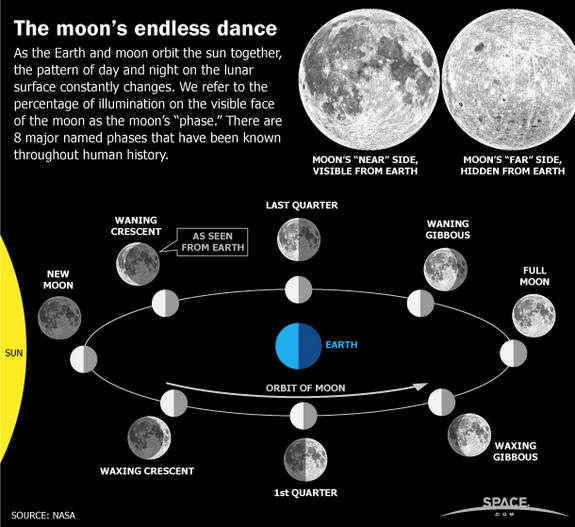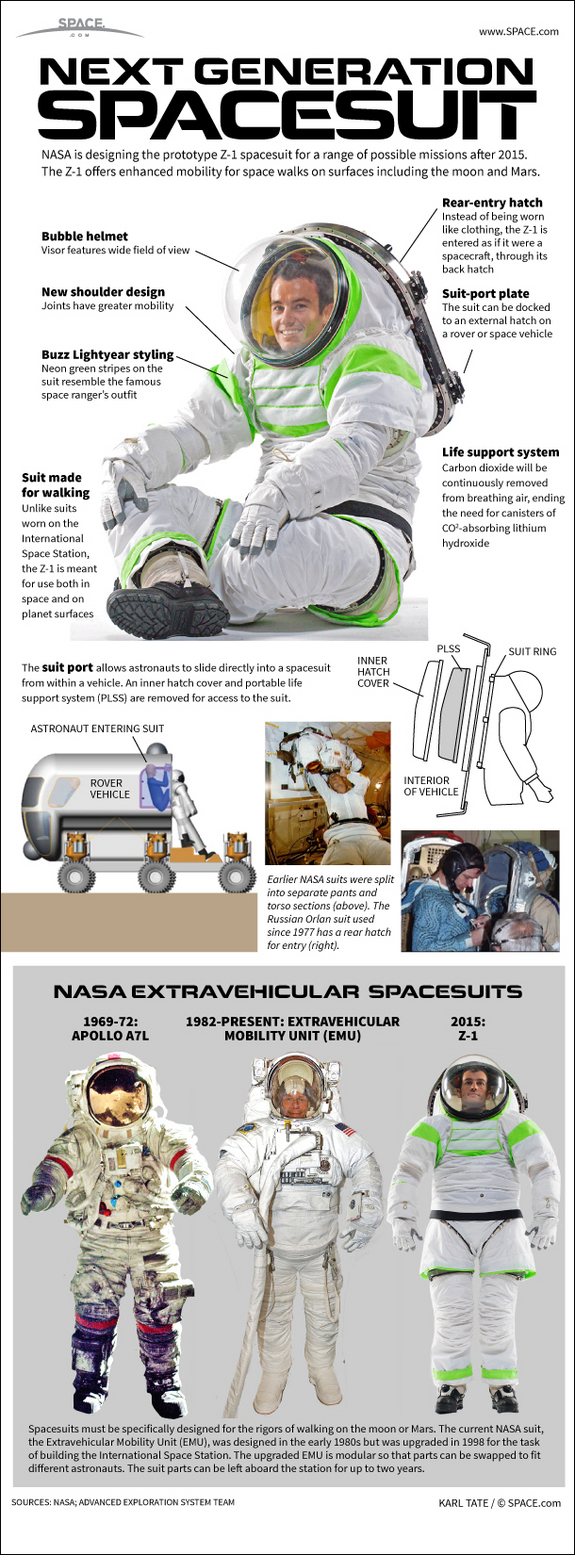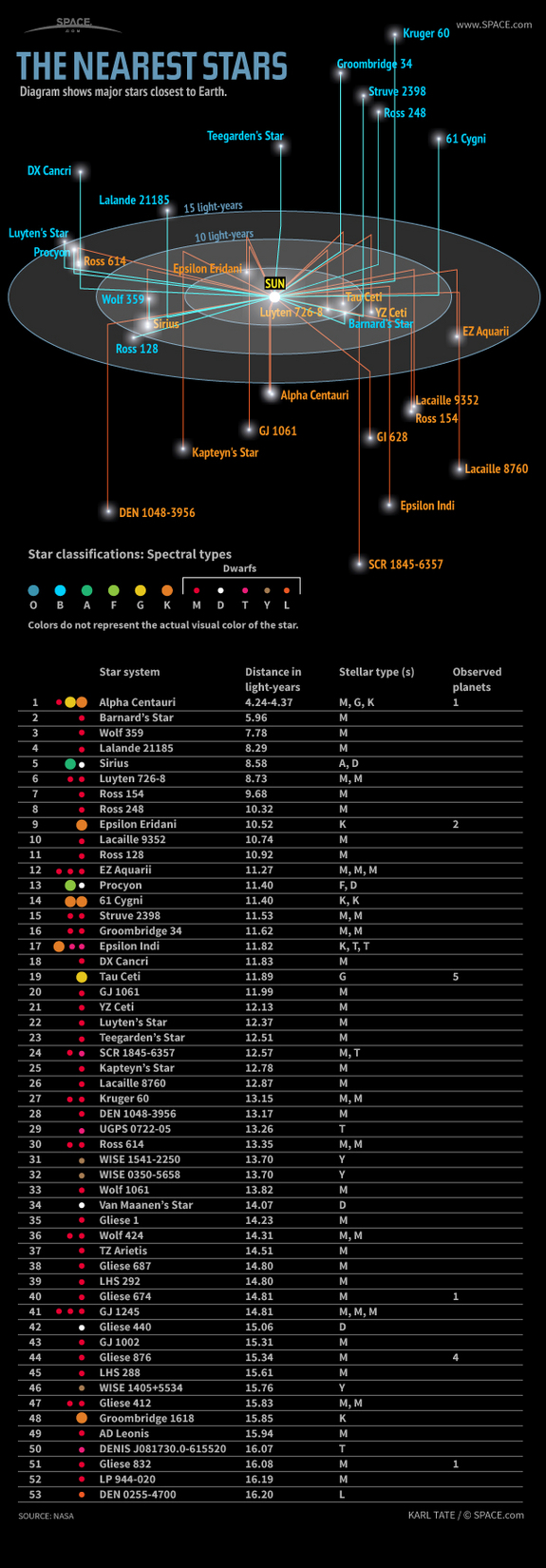Saturday, December 15, 2012
Answer to Question 151
A151: A gravastar is an extremely dense, cold, dark, thick-shelled object that contains springy, oddly-behaving space inside it. A gravistar is the remnant of a dying star that has imploded; it has many similarities to a black hole, but emits far brighter X-rays than a black hole. The existence of gravistars is not universally accepted.
Spectacular Geminid Fireball!
Flaring brighter than the full moon, this spectacular Geminid lit up the sky above Cartersville, Ga., at 2:29 a.m. EST on the morning of Dec. 14. This is one of the brightest fireballs observed by the NASA network of meteor cameras in over 4 years of operation. (NASA/MSFC/MEO)
NASA Radar Images Asteroid Toutatis
This 64-frame movie of asteroid Toutatis was generated from data by Goldstone's Solar System Radar on Dec. 12 and 13, 2012. In the movie clips, the rotation of the asteroid appears faster than it occurs in nature.
Friday, December 14, 2012
Answer to Question 150
A150: Gravitational collapse is when an object in space (like an interstellar cloud of dust) collapses under its own weight.
World Will Not End On 12.21.12... Really, NASA Says | Video
Delving deep into Mayan history, NASA scientist reveals that, much like an odometer, the Mayan calendar will simply roll-over when it reaches its end. Asteroid, phantom world (Nibiuru) and Sun threats are debunked.Credit: NASA
Study Reveals a Remarkable Symmetry in Black Hole Jets
Astronomers examining the properties of black hole jets compared 54 gamma-ray bursts with 234 active galaxies classified as blazars and quasars. Surprisingly, the power and brightness of the jets share striking similarities despite a wide range of black hole mass, age and environment. Regardless of these differences, the jets produce light by tapping into similar percentages of the kinetic energy of particles moving along the jet, suggesting a common underlying physical cause.
Credit: NASA's Goddard Space Flight Center
GRAIL's Final Resting Spot
These maps of Earth's moon highlight the region where the twin spacecraft of NASA's Gravity Recovery and Interior Laboratory (GRAIL) mission will impact on Dec. 17, marking the end of its successful endeavor to map the moon's gravity. The two washing-machine-sized spacecraft, named Ebb and Flow, will impact at an unnamed mountain near the moon's North Pole.
These maps are from NASA's Lunar Reconnaissance Orbiter.
Image credit: NASA/GSFC
These maps are from NASA's Lunar Reconnaissance Orbiter.
Image credit: NASA/GSFC
Last Flight for GRAIL's Twin Spacecraft
This animation shows the final flight path for NASA’s twin Gravity Recovery and Interior Laboratory (GRAIL) mission spacecraft, which will impact the moon on Dec. 17, 2012, around 2:28 p.m. PST. Their successful prime and extended science missions now completed, the twin GRAIL spacecraft Ebb and Flow are being sent purposefully into the moon because their low orbit and fuel state precludes further scientific operations
Thursday, December 13, 2012
Answer to Question 149
A149: The Galilean moons are the four largest moons of Jupiter. These moons, Ganymede, Io, Callisto, and Europa, were discovered by Galileo in 1610; Galileo was using his 20-power telescope. These satellites were the first bodies known to orbit another planet.
Titan's Nile-Like River Valley
This image from NASA's Cassini spacecraft shows a vast river system on Saturn's moon Titan. It is the first time images from space have revealed a river system so vast and in such high resolution anywhere other than Earth. The image was acquired on Sept. 26, 2012, on Cassini's 87th close flyby of Titan. The river valley crosses Titan's north polar region and runs into Ligeia Mare, one of the three great seas in the high northern latitudes of Saturn's moon Titan. It stretches more than 200 miles (400 kilometers).
America's First 'First' in Space
On Dec. 14, 1962, NASA's Mariner 2 spacecraft flew by Venus, making the United States the first country to complete a successful mission to another planet.
Credit: NASA/JPL-Caltech
Wednesday, December 12, 2012
Answer to Question 148
A148: A semidiurnal tide tide is a tide having a period of about 12 hours; it has two high waters and two low waters during a tidal day.
Orion's Rainbow of Infrared Light
This view of the Orion nebula highlights fledgling stars hidden in the gas and clouds. It shows infrared observations taken by NASA's Spitzer Space Telescope and the European Space Agency's Herschel mission, in which NASA plays an important role. A star forms as a clump of this gas and dust collapses, creating a warm glob of material fed by an encircling disk. These dusty envelopes glow brightest at longer wavelengths, appearing as red dots in this image. In several hundred thousand years, some of the forming stars will accrete enough material to trigger nuclear fusion at their cores and then blaze into stardom.
Credit: NASA/ESA/JPL-Caltech/IRAM
3-Mile-Long Asteroid Seen By SLOOH Space Camera | Video
The irregularly-shaped space rock named 4179 Toutatis was captured by the SLOOH team on December 11th, 2012. Its closest approach to Earth will be nearly 4.4 million miles away on December 12th
Monday, December 10, 2012
Atmospheric Loss on Mars
This plot shows the first-ever look at the deuterium to hydrogen ratio measured from the surface of Mars, as detected by the Sample Analysis at Mars instrument, or SAM, on NASA's Curiosity rover. Deuterium is a heavier version of the hydrogen atom. Scientists look at the deuterium to hydrogen ratios on Mars (or D/H levels) along with isotopes of other elements to study how its atmosphere has changed over time. Mars, which has less gravity than Earth and lacks a strong enough magnetic field to shield its atmosphere from the sun, is slowly losing its atmosphere. As this process occurs, the lighter hydrogen atoms are preferentially lost compared to the heavier deuterium ones.
Curiosity Rover's Traverse, August through November 2012
This map shows where NASA's Mars rover Curiosity has driven since landing at a site subsequently named "Bradbury Landing," and traveling to an overlook position near beside "Point Lake," in drives totaling 1,703 feet (519 meters). The rover landed on Aug. 5 Pacific Time (Aug. 6, Universal Time). It was at the easternmost waypoint on this map on Nov. 30, 2012. It worked on scoops of soil for a few weeks at the drift of windblown sand called "Rocknest." The place called "Glenelg" is where three types of terrain meet. The depression called "Yellowknife Bay" is a potential location for selecting the first target rock for Curiosity's hammering drill.
Chlorinated Compounds at 'Rocknest'
The first examinations of Martian soil by the Sample Analysis at Mars, or SAM, instrument on NASA's Mars Curiosity rover show no definitive detection of Martian organic molecules at this point. Organic molecules are carbon-containing compounds essential for life on Earth. The soil grains were acquired from a wind drift named "Rocknest."
Answer to Question 147
A147: The Sea of Tranquility (Mare Tranquillitatis) is a large plain on the moon. The first moon landing, Apollo 11, in 1969, was to this sea.
Saturday, December 8, 2012
Answer to Question 146
A146: The saros is the roughly 18-year periodic cycle of the Earth-Moon-Sun system. Every 6,585 days, the Earth, Moon and Sun are in exactly the same position. When there is a lunar eclipse, there will also be one exactly 6,585 days later.
Sinuous Gullies, Close-up
WISE Finds a Galactic Metropolis
A galaxy cluster 7.7 billion light-years away has been discovered using infrared data from NASA's Wide-field Infrared Survey Explorer (WISE). The discovery image is shown in the main panel. The inset shows a deeper, or more sensitive, optical and near-infrared composite constructed using data from the WIYN telescope at Kitt Peak in Arizona and Japan's Subaru Telescope on Mauna Kea in Hawaii. The red galaxies in the inset image are part of the cluster, while the circles highlight the galaxies seen by WISE that were used to detect the cluster.
Moon, Planet and Star Meet in Night Sky This Weekend
On three consecutive mornings, starting Sunday (Dec. 9), the moon will perform a bit of "celestial hopscotch" and pass near three bright celestial bodies: a bright star and two planets. Here we'll talk briefly about the first two encounters early on Sunday and Monday (Dec. 10) mornings.
Thursday, December 6, 2012
Answer to Question 145
A145: An eclipsing binary is two close stars that appear to be a single star varying in brightness. The variation in brightness is due to the stars periodically obscuring or enhancing one another. This binary star system is tilted (with respect ot us) so that its orbital plane is viewed from its edge.
Possibly Habitable Super-Earths - Catalog To Date | Video
The Planetary Habitability Laboratory (PHL) had compiled a Habitable Exoplanets Catalog (HEC). Currently, the possible Earth-like exoplanets are Gliese 581d, HD 85512b, Kepler 22b, Gliese 667Cc, Gliese 581g, Gliese 163c, and HD 40307g.
Credit: PHL @ UPR Arecibo, HPCf @ UPR, and ESO/S, Mash Mix: SPACE.com
Space Rocks Vesta and Ceres Visible in Night Sky This Week
On the morning of Sunday December 9, The brightest asteroid Vesta will be in opposition to the Sun, close to the bright planet Jupiter. CREDIT: Starry Night Software
On Sunday (Dec. 2), the giant planet Jupiter reached opposition with the sun, lining up directly opposite the sun in the sky. That means it's a great target for stargazers, who can see it shine brightly all night long this week.
The Black Marble
This new global view and animation of Earth's city lights is a composite assembled from data acquired by the Suomi NPP satellite. The data was acquired over nine days in April 2012 and 13 days in October 2012. It took 312 orbits to get a clear shot of every parcel of Earth's land surface and islands. This new data was then mapped over existing Blue Marble imagery of Earth to provide a realistic view of the planet.
Credit: NASA Earth Observatory/NOAA NGDC
Why Are We Seeing So Many Sungrazing Comets?
People have been hunting for sungrazing comets for hundreds of years, but as of 1979, we only knew of 9. Today we have seen 3,000 thanks to better observation tools. Credit: NASA/Goddard Scientific Visual Studio
GRAIL's Gravity Tour of the Moon
This movie shows the variations in the lunar gravity field as measured by NASA's Gravity Recovery and Interior Laboratory (GRAIL) during the primary mapping mission from March to May 2012. Very precise microwave measurements between two spacecraft, named Ebb and Flow, were used to map gravity with high precision and high spatial resolution. The field shown resolves blocks on the surface of about 12 miles (20 kilometers) and measurements are three to five times improved over previous data.
Wednesday, December 5, 2012
Answer to Question 144
A144:A lenticular galaxy is a lens-shaped galaxy. These enormous groupings of older stars have a smooth, even distribution and very little internal structure.
Some lenticular galaxies (abbreviated SO galaxies) include M84 (in Virgo), M85 (in Virgo), M86 (in Virgo), NGC 5866 (the Spindle Galaxy), and perhaps M102.
ESA/NASA’s SOHO Spacecraft
This combined image from Nov. 8-9, 2012, shows the sun's innermost atmosphere as seen by the Solar Dynamics Observatory (SDO) inside a larger image provided by the Solar and Heliospheric Observatory (SOHO). A coronal mass ejection or CME can be seen traveling away from the sun in the upper right corner. Scientists can compare the images to correlate what's happening close to the sun with what happens further away.
Credit: ESA/NASA/SOHO/SDO/GSFC
Windblown Sand from the 'Rocknest' Drift
The Mars Hand Lens Imager (MAHLI) on NASA's Mars rover Curiosity acquired close-up views of sands in the "Rocknest" wind drift to document the nature of the material that the rover scooped, sieved and delivered to the Chemistry and Mineralogy Experiment (CheMin) and the Sample Analysis at Mars (SAM) in October and November 2012.
NASA Announces Robust Multi-Year Mars Program
Building on the success of Curiosity's Red Planet landing, NASA has announced plans for a robust multi-year Mars program, including a new robotic science rover set to launch in 2020. This announcement affirms the agency's commitment to a bold exploration program that meets our nation's scientific and human exploration objectives.
Tuesday, December 4, 2012
Chinese astronauts may grow veg on Moon
BEIJING, Dec. 3 (Xinhua) -- Chinese astronauts may get fresh vegetables and oxygen supplies by gardening in extraterrestrial bases in the future, an official said after a just-concluded lab experiment in Beijing.
Answer to Question 143
A143: A constellation is a group of stars that, when seen from Earth, form a pattern. The stars in the sky are divided into 88 constellations.
The brightest constellation is Crux (the Southern Cross). The constellation with the greatest number of visible stars in it is Centaurus (the Centaur - with 101 stars). The largest constellation is Hydra (The Water Snake) which extends over 3.158% of the sky.
There are also asterisms, smaller apparent star patterns within a constellation, like the Big Dipper (in Ursa Major), the Little Dipper (in Ursa Minor), Keystone (in Hercules), and the Pleiades (in Taurus).
Curiosity Shakes, Bakes, and Tastes Mars with SAM
NASA's Curiosity rover analyzed its first solid sample of Mars with a variety of instruments, including the Sample Analysis at Mars (SAM) instrument suite. Developed at NASA's Goddard Space Flight Center in Greenbelt, Md., SAM is a portable chemistry lab tucked inside the Curiosity rover. SAM examines the chemistry of samples it ingests, checking particularly for chemistry relevant to whether an environment can support or could have supported life.
Voyager 1 Spacecraft Enters New Realm at Solar System's Edge
This still image and set of animations show NASA's Voyager 1 spacecraft exploring a new region in our solar system called the "magnetic highway." In this region, the sun's magnetic field lines are connected to interstellar magnetic field lines, allowing particles from inside the heliosphere to zip away and particles from interstellar space to zoom in. Image released Nov. 29, 2012.
CREDIT: NASA/JPL-Caltech
NASA's Voyager 1 spacecraft has discovered a new layer of the solar system that scientists hadn't known was there, researchers announced today (Dec. 3).
Outer boundary of the Heliosphere
This artist's concept shows how NASA's Voyager 1 spacecraft is bathed in solar wind from the southern hemisphere flowing northward. This phenomenon creates a layer just inside the outer boundary of the heliosphere, the giant bubble of solar ions surrounding the sun. Image released Nov. 29, 2012.
CREDIT: NASA/JPL-Caltech
Sample Analysis at Mar
How samples are delivered and then tested in the Sample Analysis at Mars (SAM) suite on the Mars Curiosity rover.
Variety of Martian Soils
This collage shows the variety of soils found at landing sites on Mars. The elemental composition of the typical, reddish soils were investigated by NASA's Viking, Pathfinder and Mars Exploration Rover missions, and now with the Curiosity rover, using X-ray spectroscopy. The investigations found similar soil at all landing sites. In addition, the soil was usually unchanged over the traverse across the Martian terrain made by both Mars Exploration Rovers.
Subscribe to:
Posts (Atom)















































